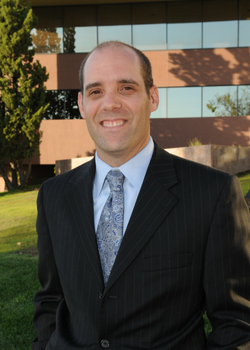A recent conversation I had with my son as we drove to his day's activity comes to mind in regards to this week's Torah portion of Matot-Masei. The drive took us through the much of the West San Fernando Valley and along several of its main arteries. As we passed a row of thrift shops, a wet suit that hung in the window caught his attention. Sammy remarked, "Daddy I think you can get a wetsuit for 39 cents." That began the conversation that would take us to another window sign where whatever service was being provided had been discounted by $50.00 (he thought I should go in just for the discount), then to discuss how shop owners get people into their stores, then to the question of how so many shops can even stay in business, to how some don't succeed (like that one store front we can all think of, which, not matter what store or restaurant goes in, it never succeeds). Eventually our mental wanderings brought us to Japan when I mentioned that I'd once heard of a Japanese custom that if a business fails in a particular local, the building itself would be torn down as it was believed that bad spirits reside there (not sure if this custom truly existed but it was fun to discuss with my eight year-old).
Well, in truth, this week's Torah Reading is far more substantive than my conversation with my son, with many weighty subjects for discussion. Matot moves from the annulment of vows and oaths made by women, to Moses directing Israel against Midian (as related to last week's Torah portion, Pinchas) and then to the tribes of Gad and Reuben asking Moses for permission to settle on the East side of the Jordan River instead of crossing the Jordan to settle. Masei is no less weighty as it includes the significant issue of defining the boundaries for Israel return home, 40 years after its redemption from enslavement in Egypt.
Sandwiched in between these topics Moses recounts the many points along Israel's journey from Ramses to its final encampment at the Jordan River- forty-two legs in all, including the starting point and the journey's end; over forty years, with fourteen of the stops being in the first year of Israel's wanderings and eight in the final year; only 20 of the 42 legs of this journey during the intervening 38 years. It is the type of recounting that many of us only glance at when reading Torah.
Nehama Leibowitz, in Studies in Bamidbar (Numbers), delineates a discussion amongst the commentators on the significance of this recounting. Rashi asks "Why are these stations recorded here?" It makes sense that prior to defining the boundaries for Israel's settlement in Canaan, Moses would recall the totality of Israel wanderings. This recollection contextualizes Israel's settlement in that of God's redemption of Israel from bondage. According to Maimonides, "Every narrative in the Torah serves a certain purpose in connection with religious teaching. It either helps to establish a principle of faith, or to regulate our actions, and to prevent wrong and injustice among men...of this kind is the enumeration of the stations of the Israelites in the wilderness. At first sight, it appears to be entirely useless. To remove such a misconception the Torah states: And Moses wrote their goings forth, stage by stage, by the commandment of the Lord.' It was indeed most necessary that these should be recorded. For miracles are only convincing to those who witness them; coming generations who know them only at second hand may consider them as figments of the imagination (Leibowitz, 1993)."
And what was the miracle? Maimonides reminds us, "...the greatest miracle in the Torah is the stay of the Israelites in the wilderness for forty years with a daily supply of manna... [in the] wilderness as described in the Torah... [that was] very remote from cultivated land and naturally not adapted for the habitation of man (Leibowitz, 1993)."
The manna! When rereading this portion, I had completely forgotten about the manna. It is remarkable; miraculous in fact that Israel journeyed for forty years being sustained by manna alone. And it's important to realize that while travelling from point to point, as Rashi points out, 38 years were filled with long stays. Life was lived. Perhaps not with carpools and Mac n' Cheese, but with life: Relationships; Conversations and interactions; Birth and Death; Joy and Love and Pain and Sorrow. For the Children of Israel, Moses' recollection of all of the stations on their journey must have filled them with deep emotion for what was lost and what was gained by their departure for Egypt. This departure was not merely as a People but as a community, as families and friends and individuals. And in the manna was God's presence, God's love and the faith of a People in values and ideals.
While the subject matter of Matot-Masei may be more sustentative, the memory of my conversation with my son is no less impactful. We continue to laugh about our "wanderings." And our memory of a simple drive to his day camp will last. A recent read, Parenting from the Inside Out, by Daniel J. Siegel and Mary Hartzell, speaks of "mindfulness." Mindfulness is paying attention to life's daily moments, to the adjoining series of moment that define our lives and the fullness of emotions within these moments. A ride in the car with a child, spouse or friend can be transformed into a marker, a leg, in one's own journey, if mindful of the moment and its potential. What are the legs of your journey? How can each of our journeys be filled with miraculous moments instead on red lights and traffic jams?
Safe travels and Shabbat Shalom.

